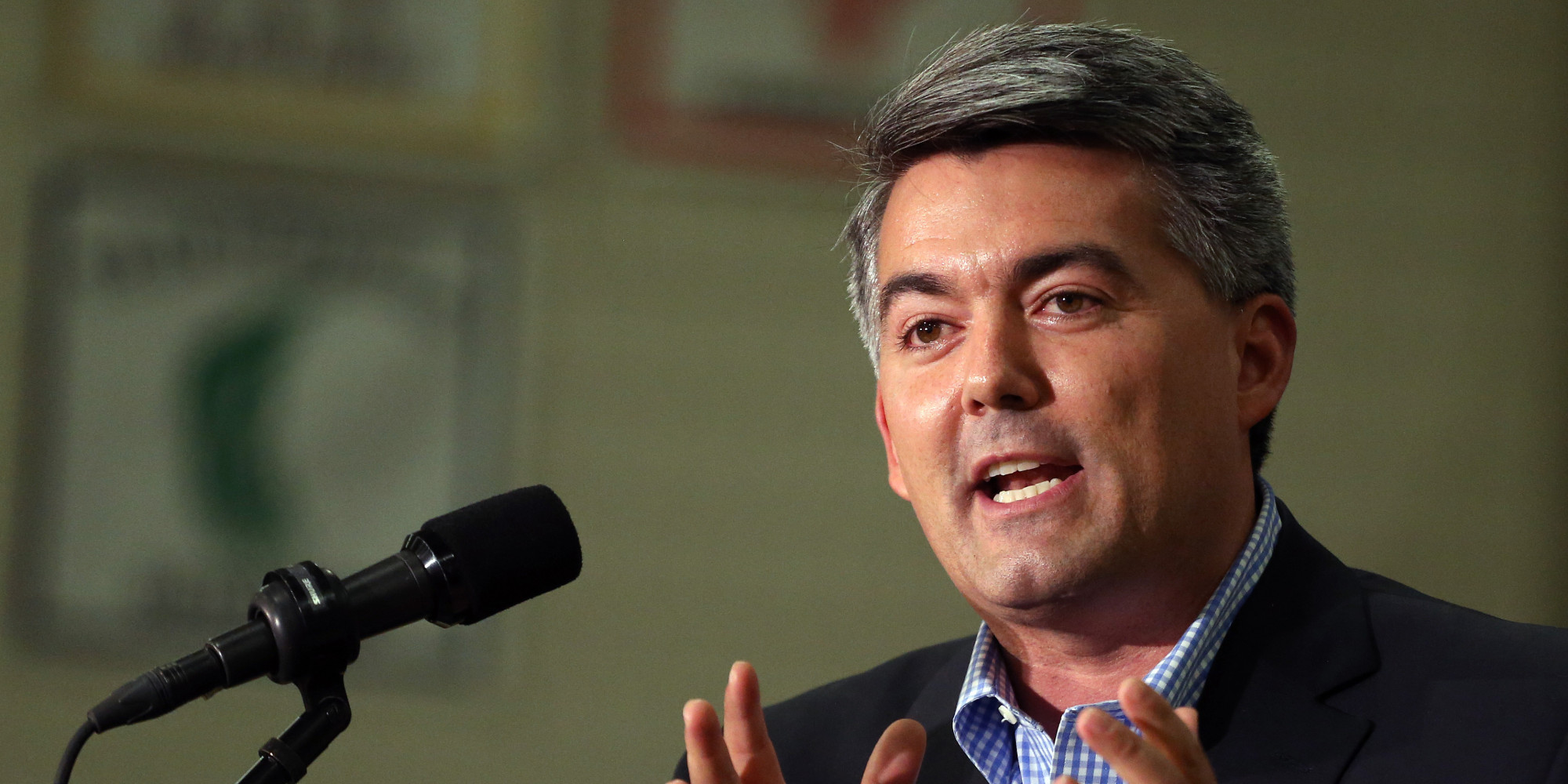WASHINGTON – At least four Republican senators face uphill battles to win reelection next year, handing Democrats a long-awaited chance to grasp control of the upper chamber of Congress, according to political experts.
These incumbent GOP senators present targets of opportunity for Democratic challengers in states scattered across the nation.
While the reasons each senator is threatened vary, one common factor that burdens these GOP lawmakers is the man at the top of their ticket, President Donald Trump, a mercurial and tempestuous Oval Office occupant now facing impeachment in the House and, likely, a trial in the Senate.
To be sure, there is a Democratic senator, Doug Jones of Alabama, who faces tough reelection odds, according to the experts.
But if these four GOP senators lose their reelection bids, that is roughly what Democrats need to take control of the Senate. Currently, there are 53 Republican senators, versus 45 Democrats and two independents from Northern New England who caucus with the Democrats.
“Realistically, Democrats will need to defeat four incumbent Republican senators to forge a 50-50 tie in the Senate, which might be enough for a majority if they are concurrently winning the White House,” according to Kyle Kondik, managing editor of Sabato’s Crystal Ball at the University of Virginia Center for Politics. If the Democratic presidential candidate wins, that means a Democrat will occupy the vice presidency and get to vote as president of the Senate to break any tie vote in the upper chamber—ensuring Democratic control there.
“Fortunately for Democrats, they do have at least four clear targets,” Kondik explained.
Sen. Cory Gardner, Colo.
Kondik dissected just why Gardner is struggling to win another term. “Cory Gardner is in a tough spot if only because Trump is likely to lose Colorado again, a nation-wide reality that affects a state-level race,” Kondik explained.
Gardner is “50-50 at best and is probably an underdog,” Kondik concluded. Sabato ranks Gardner as a tossup, as do the Cook Political Report and Stuart Rothenberg Inside Elections.
RELATED: Gardner Faces Dicey Reelection Contest; Senate Hangs in Balance; Trump a Liability.
Sen. Martha McSally, Ariz.
McSally, an Air Force pilot who has flown combat missions, ran for election to the Senate last year and lost to Democratic Rep. Kyrsten Sinema of Arizona. But McSally later was appointed to a vacant Senate seat. So she has never won election to the Senate on her own. That’s factor one.
Factor two: her opponent is Mark Kelly. While she may have flown high as a pilot, he has flown far higher—250 miles high—on the International Space Station. He’s an astronaut.
Factor three: his wife, Gabrielle Giffords, was a congresswoman who was shot by a lunatic, making the couple enormously sympathetic figures.
Factor four: Kelly has far more money, outraising McSally by almost two to one. Like Colorado, Arizona is a purple state, with 1.2 million Democrats and 1.3 million Republican registered voters.
Factor five: Kelly and Giffords lead a gun control organization. While Arizona ranks tenth among the 50 states in terms of guns per person, many Democratic voters favor gun control measures and thus may be likely to head to the polls and vote for Kelly next year.
To put it all into perspective, “Arizona is an emerging presidential battlefield and that Senate race should mirror the presidential” contest, Kondik predicted.
Sabato, Rothenberg and Cook all rate McSally as no better than a tossup in the election.
Sen. Thom Tillis, N.C.
Tillis flip flopped on using money from military bases for Trump’s wall. The southern senator is strongly opposing Trump’s impeachment even though Tillis as a senator is supposed to remain impartial since he will be a member of the jury–the Senate–that will decide Trump’s guilt or innocence.
At the same time, there are some extreme conservatives who say they oppose Tillis because he isn’t supporting Trump 100 percent. The senator needs conservatives to turn out on election day and give him another six years on Capitol Hill.
“Thom Tillis has primary trouble in North Carolina and should have a competitive general election too, although Trump could save him in both contests,” Kondik said.
While the Cook Report estimates North Carolinians will lean Republican and give Tillis a win, both Rothenberg and Sabato rate Tillis as an uncertain tossup.
Sen. Susan Collins, Maine
In one way, Collins, with two decades of Senate service, should be gliding toward another reelection.
For example, she received credit for getting approval for construction of cutting-edge DDG 1000 destroyers at General Dynamics Bath Iron Works in Maine, a state where good-paying jobs are scarce. (The median household income in Maine is just $53,024, versus $71,305 in neighboring New Hampshire in 2013-17, according to the Census Bureau.)
And she’s often bipartisan, willing to oppose Republican leaders.
But that is precisely why so many Mainers have been and still are infuriated by the Republican senator’s vote to confirm Brett Kavanaugh to the Supreme Court last year despite lengthy testimony that he sexually harassed and assaulted women in his school days. Many in Maine also fear Kavanaugh will provide a Supreme Court vote to reverse Roe v. Wade, the 1973 court opinion that found there is a federal right to abortion. And if that happens, voters will blame Collins.
She provided the 50th Senate vote needed to place Kavanaugh on the high court bench, and many Mainers haven’t forgotten that.
“Susan Collins … is more vulnerable than she’s been previously in a competitive state that probably won’t vote for Trump,” Kondik said.
Ernst of Iowa Also Struggling
Another Republican senator—Joni Ernst of Iowa—may not be as endangered as these four, but she’s fallen in recent polling and is on the defensive.
Aside from all of those Republican incumbent senators facing tough races, however, there also is a Democrat struggling in a 2020 election campaign: Sen. Doug Jones of Alabama.
“Doug Jones continues to be the most vulnerable senator,” Kondik said. “In a polarized, straight-ticket voting era, Jones’ victory in December 2017 was something of a fluke, as it required a close victory over a horrible opponent in a good Democratic political environment. Generating the kind of crossover support needed to win while sharing the ballot with the presidential race will be a Herculean task for Jones, and it may just not be possible. So he’s a clear underdog.”
Tuesday’s Election Is a Bright Sign for Democrats
However, returns in the off-year elections held Tuesday show the nation this year is once again giving Democrats ample happy news, even in the traditionally conservative South. For example, Democrats in bellwether Virginia retained control of the governorship and grabbed control of both houses in the General Assembly, flipping the legislature from red to blue. It is the first time in a quarter century that Democrats have controlled both houses in the Virginia legislature. And elections have consequences, as pundits have noted. The capital of the Confederacy is about to get gun control laws and other Democratic priorities, an exultant Gov. Ralph Northam promised after the election night returns showed Democrats swept to a government-wide victory.
In like manner, in another southern state, Kentucky, Democratic challenger Andy Beshear appeared to score a 5,000-odd-vote victory over incumbent Gov. Matt Bevin. However, Bevin refused to concede, announcing that he will press for a recanvass of votes to see whether they were correctly added, and hinted he may make other moves to block Beshear’s ascension to the highest state post. Bevin’s poor showing came despite Trump coming to the bluegrass state to campaign for the governor.
Moving from the state to the local level, Democrats scored some surprising victories in suburban areas that Republicans have regarded as their turf. For example, in the burbs surrounding Philadelphia, Democrats came out victorious in Delaware County, Chester Country and Bucks County.
In Virginia, Democrats gained three seats on the Loudon County Board of Supervisors, so Democrats now have a majority on the panel. And Democrats increased their dominance on the Fairfax County School Board.
On top of all that, Trump may spend much of next year being accused of high crimes and misdemeanors. The House is moving steadily toward impeaching him, which would mean the Senate then would try him on the charges (articles of impeachment).
So rather than Republican senators and representatives in Congress hoping to ride Trump’s coattails to election victories, Trump may be unable to save himself if a blue wave sweeps the White House, Senate and House.
Trump’s standing with voters is so weak that even a poll taken by the conservative Fox News shows that in a hypothetical contest between Trump and his 2016 opponent, Democrat Hillary Clinton, 43 percent would vote for her, and only 41 percent would vote for him. (True, that is within the margin of error.) Key fact: she isn’t even running this time.
When Trump won the 2016 election, Republicans also retained control of the Senate and House. Since then, the GOP has lost control of the House. And Democrats are hoping to seize all three—the White House, Senate and House—in the fraught election a year from now.




